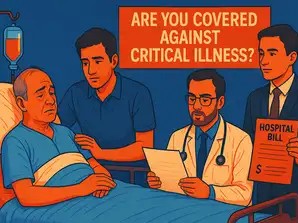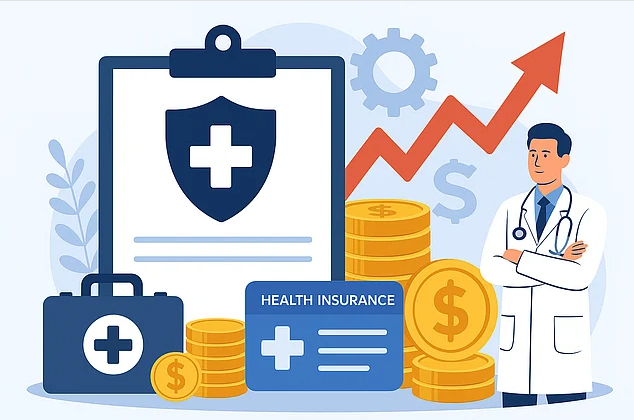Cancer treatment can wipe out your hard-earned savings that you had built up over years in just a few months if you or any of your family members is diagnosed with this deadly disease. Plus, there are plenty of such life diseases that also require costly treatments. Any critical illness diagnosis can be a big shock, even for the toughest among us, and it might get worse if you don’t have enough savings to support yourself and your family during tough times.
But there’s a way to ease that financial strain significantly by opting for a critical illness coverage insurance plan. In this discussion, we’ll cover what critical illness is, who should consider buying it and how much cover you actually need.
So, what exactly is critical illness in health insurance?
If you find yourself diagnosed with a serious or life threatening condition like cancer, a heart attack, kidney failure, or paralysis, the treatment costs are likely to be quite high. A critical illness insurance plan provides you with a lump-sum payment when you are diagnosed with a covered disease that meets certain severity criteria.
As explained by Siddharth Singhal, Business Head – Health Insurance, Policybazaar.com, “Critical illness insurance complements standard health insurance by covering the often-unmet costs associated with serious illnesses like cancer, heart attack, or stroke, which are usually exorbitant and long-term”.
“These illnesses require expensive treatments like multiple chemotherapy, organ transplant surgery that can be beyond the scope of standard health insurance coverage”, he added.
A critical illness plan provides valuable financial assistance, even if you already have an active health insurance policy that might not fully cover certain serious conditions.
This plan works as an extra layer of protection beyond your regular health insurance. With this cover, families can handle medical and financial stress more easily. This money can be used for treatment, recovery, and more. Besides, you can also use this payout as a substitute for your income that may be compromised due to serious illness.
Here’s the list of prominent critical illness diseases
- Cancer of Specified Severity
- Angioplasty
- Heart Attack
- Heart Valve Surgery
- Surgery to Aorta
- Primary Pulmonary Hypertension
- Blindness
- Chronic Lung Disease
- Chronic Liver Disease
- Kidney Failure
- Major Organ / Bone Marrow Transplant
- Benign Brain Tumour
- Brain Surgery
- Coma
- Permanent Paralysis of Limbs
- Alzheimer’s Disease
- Muscular Dystrophy
- Parkinson’s Disease
- Poliomyelitis
- Deafness
Note: The number of illnesses covered in a policy can vary from insurer to insurer, as some health plans even cover up to 100 critical illnesses.
There are several ways of getting good coverage against critical illnesses. One option is to buy a good comprehensive health insurance policy that includes high coverage for critical illnesses. Another option is to buy a stand-alone critical illness policy. You can also buy it as a rider or as an add-on with your life insurance or health insurance policy.
Standalone critical illness health insurance plan vs critical illness rider
There are many factors that lead to the differences between a standalone critical illness health insurance policy and critical illness rider, such as premium costs, coverage, payout amount, and more.
Sarita Joshi – Head of Life & Health Insurance, Probus says: “Both the options have their own place, the choice completely depends on an individual’s budget or health risks. If you’re looking for basic protection at a lower cost, adding a critical illness rider to your existing term or health policy is a good start, it adds an additional layer of protection without the need to manage multiple policies.
She further explained, “However, such a rider generally has smaller payout amounts, limited coverage options or sometimes even fixed illnesses coverage. On the other hand, a standalone critical illness policy offers wider coverage, a larger payout, independent claim benefits etc. Such a policy is well-suited for someone with major illness or high health risks family history”.
There is one aspect where comprehensive riders may score above a critical illness rider. “A critical illness rider provides a lump-sum pay out upon the diagnosis, after which the rider is often terminated while some comprehensive riders may offer multiple pay-outs for different conditions,” says Siddharth Singhal, Business Head – Health Insurance, Policybazaar.com.








